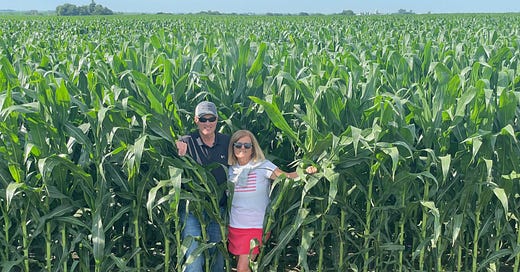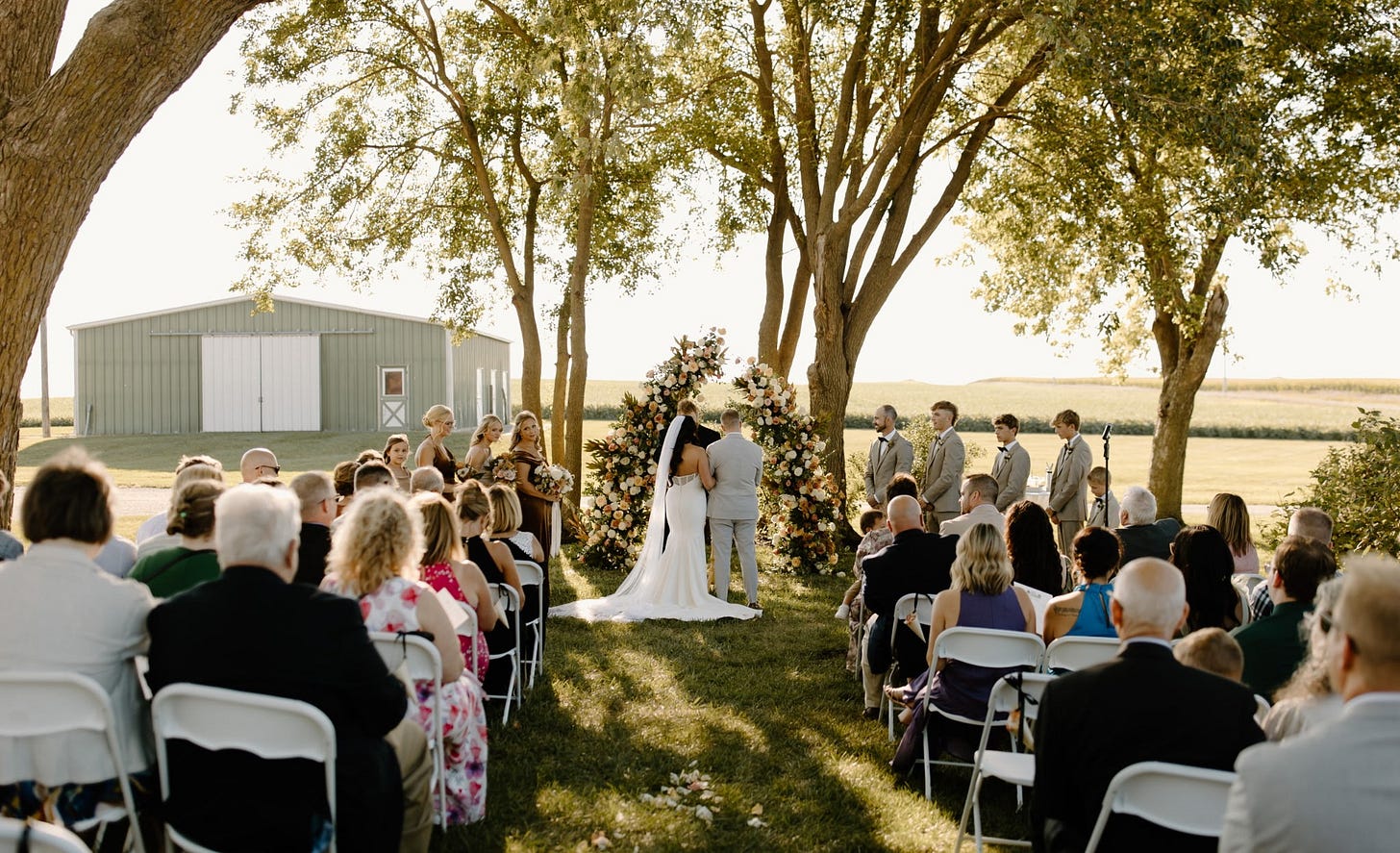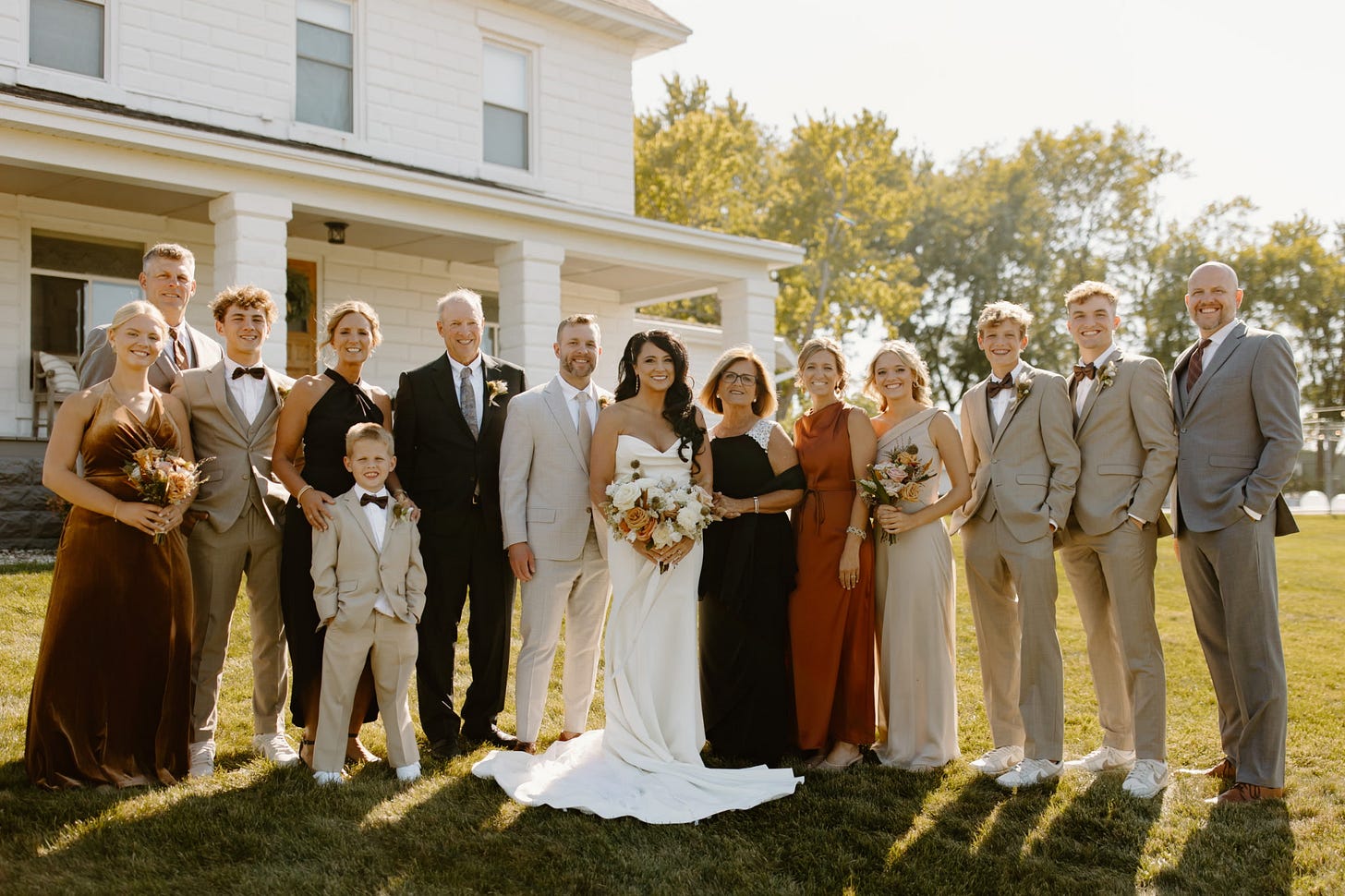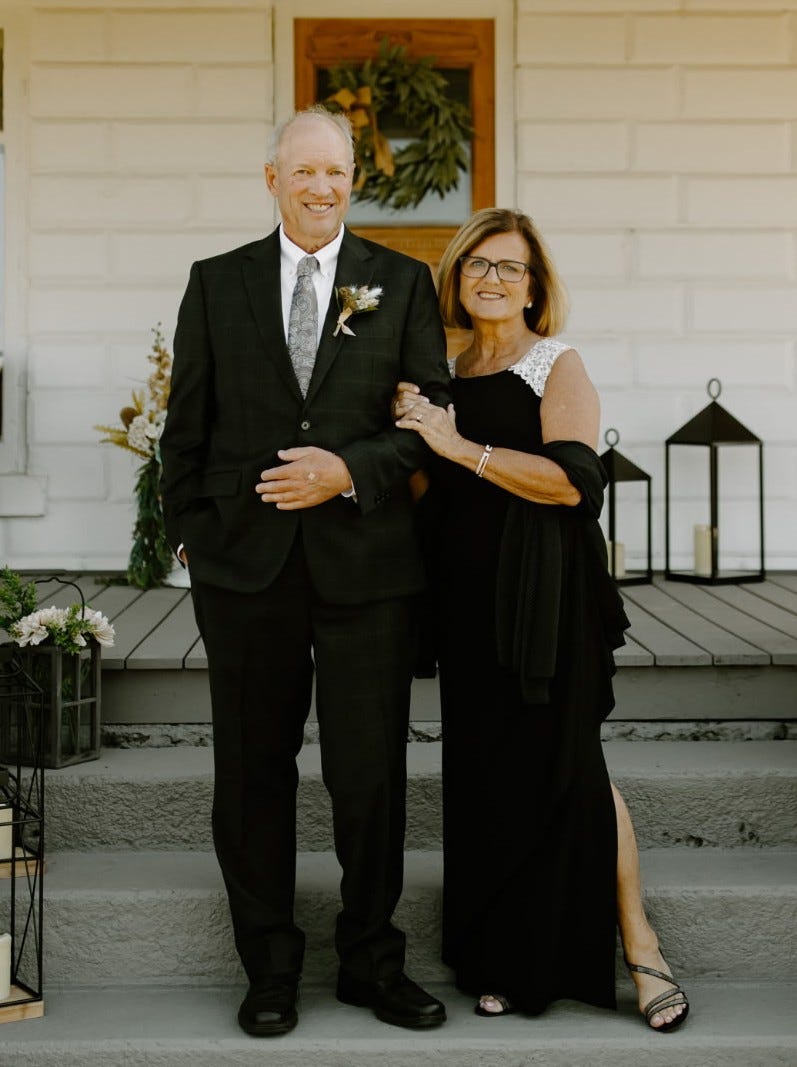Corn is tall & life is precious
Lawtons and I have a 21-year tradition of measuring their crop against the old adage “knee-high by the 4th of July.” This year encouraging their health is more important.
COOPER, Iowa – I’ve just had another revelation about being a farmer. I’m not one, as you all know, but I’ve been hanging around farmers my whole life. And since 2004, when I moved in among them on an acreage southwest of this tiny town in west-central Iowa, I’ve been studying a lot of them for occasional stories.
What I’ve learned this year, as I’ve considered my great friends and former neighbors Doug and Karen Lawton, who are 70 and 67 respectively, is that if you farm long enough, you’re probably going to have a year when crop yields, grain prices, output costs and all the rest are still important to you. But there’s something even more important.
You’re still alive, the family is good and, oh my! Isn’t it pretty in the Iowa countryside when another Independence Day arrives?
My 4th of July reports on the Lawton corn crop are a tradition that we started in 2005. We continue them now, even after 2022 when Mary Riche and I married and I moved out of the rural neighborhood to our homes in both Des Moines and Jefferson.
I want to handle the current crop report quickly: It’s as good as I’ve ever seen.
Doug and Karen Lawton in their field on July 2. They plant Hoegemeyer Hybrids seed, which originated from a family-owned company in little Hooper, Neb., and is now part of the huge Corteva Agriscience corporation based in Indianapolis.
Now on to the more important news here.
Late summer and early fall of 2024 were challenging but fun as the Lawtons groomed their picturesque farm to host the Sept. 1 outdoor wedding of their son Lance Lawton and Lindsay Trabing. The first wedding ever held on the 135-or-so-year-old farm happened so beautifully it was the talk of Greene County and beyond.
It was all good, even though Doug Lawton had an episode of atrial fibrillation in late August. They monitored him closely through the wedding and harvest, which he endured comfortably enough. He had an ablation in December, and reports “I haven’t had any heart trouble since then.”
Then in early February, Karen Lawton was stunned to receive a diagnosis of endometrial cancer.
Subsequent scans showed she also had two small, suspicious masses in the lower portion of her left lung. That led her to University of Iowa Hospitals and Clinics in Iowa City, where the skilled cancer team intensely studied her case. They include oncologist Dr. William Zeitler, gynecologic oncologist Dr. David Bender and cardiothoracic surgeon Dr. John Keech.
After two major surgeries this past spring – one of them removal of the lower lobe of the left lung – the cancer was gone. The follow-up for her is taking a cancer-control drug orally, hoping to prevent the disease from redeveloping.
“The drug I am taking is Alecensa,” she explained. “It is a targeted cancer therapy drug for non-small cell lung cancer caused by an abnormal ALK mutation gene. It has been determined that this targeted therapy is more effective than chemo in reducing the risk of the cancer returning. I take four pills in the morning and four in the evening every day for the next two years. I will have regular blood work and scans done going forward as well.”
She is having some side effects, “some muscle pain and fatigue, but that will get better,” she added.
Karen and Doug had discussions with her doctors about the possible causes of her cancer and Iowa’s alarming high rate of the disease. Those cancer rates are generally higher in the state’s rural areas than in its towns and cities. One answer they got, Karen said, is that “my lung doctor is a big believer in environmental issues causing lung cancer.”
The Lawtons, up closer, with a neighbor’s soybean field behind them.
The whole frightening experience of diagnosis, scans, surgeries and now a lengthy recovery, “has actually moved along pretty fast, and I’m grateful for that,” she said. “When you first get a diagnosis like mine, you’re shocked. You somehow believe that ‘cancer happens to other people, not me,’ but there you are. You almost drop to your knees. But then you get yourself back together and decide whether you’re just going to lie on the couch and die, or do something about it.”
The Lawtons aggressively attacked the cancer, with surgeries and check-ups in Iowa City, around spring planting.
“We wondered how it would all work out,” Doug said. “But a lot of people offered to help, and really, spring doesn’t require as much time in the field as the harvest does in the fall.”
Hired hand Rod Graven helped get the fields prepared for planting. Lawtons’ son-in-law Justin Towers and his son Nathan Towers, a high school junior, helped back-up Doug doing the actual planting. “We probably didn’t lose more than a day of planting time because of the medical trips,” he said.
So here we were again Wednesday, together on the edge of a cornfield for photographs, then back around the Lawtons’ farmhouse kitchen table for an interview.
Doug limped to both with a strained “iliotibial band tendon” – that’s the big one -- running from hip to calf on the outer side of his right leg. “I don’t know how it happened,” he said. “I woke up last Friday morning with terrible pain around my right knee. I couldn’t stand up or move on my own. I had to get a walker at first. But now I’m doing physical therapy twice a week, and it’s getting a little better every day.”
The Lawton-Trabing wedding at the farm last Sept. 1. Lance and Lindsay now live in Waukee. (Family photos)
All the Lawtons on wedding day.
I’ve done these Lawton corn stories annually in homage to the 90-to-100-year-old measure of what a good potential crop should be – “knee-high by the 4th of July.”
Of course, the hybridization of corn, vastly improved agronomy, better equipment and more technology have made that old measure laughable.
Closer to reality now: When Larry Morgan, one of my Des Moines coffeemates, heard Wednesday that I’d just been out in farm fields checking the corn, the sports broadcaster asked, “Is it as high as an elephant’s eye?”
Higher.
Google tells me the average elephant eye height is “about 8 feet.” The corn in the Lawtons’ 47th crop on Wednesday morning measured at least 9 feet high – maybe even taller.
In the past week, I’ve looked at cornfields from Des Moines to Shenandoah, and several times between Des Moines and Jefferson. If the corn finishes as well as it’s grown in the first half of the season, it might well be remembered as “the big, beautiful crop” of 2025. Generally, soybeans have “looked a little rough” early on, Karen Lawton correctly observed, but with generous rain the past two weeks, they’re now looking much better.
Prices farmers can expect at the grain elevators?
Well, on July 2 at the NEW Cooperative elevator outside Cooper, where the Lawtons expect to haul their harvest, the cash prices that day were $4.11 for a bushel of corn and $9.66 for a bushel of soybeans – yes, NEW will be accepting soybeans this year at its Cooper facility. Those prices are $2 to $3 per bushel below what most would like to have. And, get this: With the big corn harvest expected this fall, the projected price then is $3.84 for corn. “That’s pathetic,” Karen Lawton said when she heard that.
Ethanol plants typically pay a few more cents per bushel than grain elevators do.
You want additional financial context? Record prices on the grain markets were set in April and May of 2022 – with corn topping $8 per bushel and soybeans at $17.69.
The Lawtons lost their entire 2020 crop in the Aug. 10 derecho that swept their fields and farmstead, basically destroying their grain storage capabilities.
The next year, 2021, there was a wonderful recovery, with all-time record yields on their farms. They had a corn yield of “a little more than” 250 bushels per acre, Doug recalled, and soybeans yielding 72 bushels per acre.
Production last year, in 2024, approached those records, with corn yielding “225-to-235” bushels per acre and soybeans yielding “in the mid 60s” bushels per acre.
This year, they’re farming 1,200 acres – a combination of land they own and land they rent – and have about 600 acres planted in both crops.
Doug and Karen, dressed for their son’s wedding — the first one ever held on the farm and it was a very stylish event.
Their future on the farm?
With the challenges of late ’24 and the first half of ’25, and at their ages, have the Lawtons thought about retiring?
Karen has already given up a parttime job she had for years with a local florist, and her focus now is her recovery, a few community activities and attending as many of their grandchildren’s events as they’re able. Doug, who is the fourth generation Lawton on the farm, is still doing insurance and real estate work, in addition to farming.
“At 70 now, I going to look at farming a year at a time, seeing how my health is,” he said.
While they don’t have their farm succession settled, they continue to discuss it. The Lawtons’ two daughters, one son and their spouses all have good careers in other professions. But other younger family members – even in the generation of grandchildren – do show an interest.
Lawton Farms are now devoted totally to grain. For decades, their emphasis was cattle. They had up to 10,000 a year in their feedlots. But that ended in the late 1970s and early 1980s when interest rates soared on cattle loans, big feedlots closed across the Midwest, and the beef market was saturated.
Now the only livestock the Lawtons have will be a calf or two that the grandkids might be showing in 4H.
And the cats.
Lawton followers know that a year ago, Doug relented in his longtime ban of cats. He’d contended he was allergic to them. But a stray meandered on to the farm and she seemed friendly with Karen. Suddenly that cat disappeared, and within days, grandkids found her litter of six kittens. Karen raised them, naming them “Caitlin, Kate, Gabbie, Molly, Hannah and Sydney – after the Iowa Hawkeyes women’s basketball team” of 2024.
And now? “The cats are still here,” Karen reports. “I kept two and gave away four. But Syd and Gabby are here and are my pals!”
--
You can comment on this column below or write the columnist directly by email at chuck@offenburger.com.
--
Have you explored the variety of writers, plus Letters from Iowans, in the Iowa Writers’ Collaborative? They are from around the state and contribute commentary and feature stories of interest to those who care about Iowa. Please consider a paid subscription. It helps keep them going, and it keeps you in the know.









Thanks for this story. All my best to Karen as she continues her recovery!
I needed a good read on this July 4th.
This past week in news has been overwhelming 😔
We can cuss and discuss deficits, politics, etc. -- but when the sun sets it boils down to one thing in life -- health.
Then add in Faith, Family and Friends as appetizers!
RINO -- Ed (not sure that's even true anymore 🤔🤔).